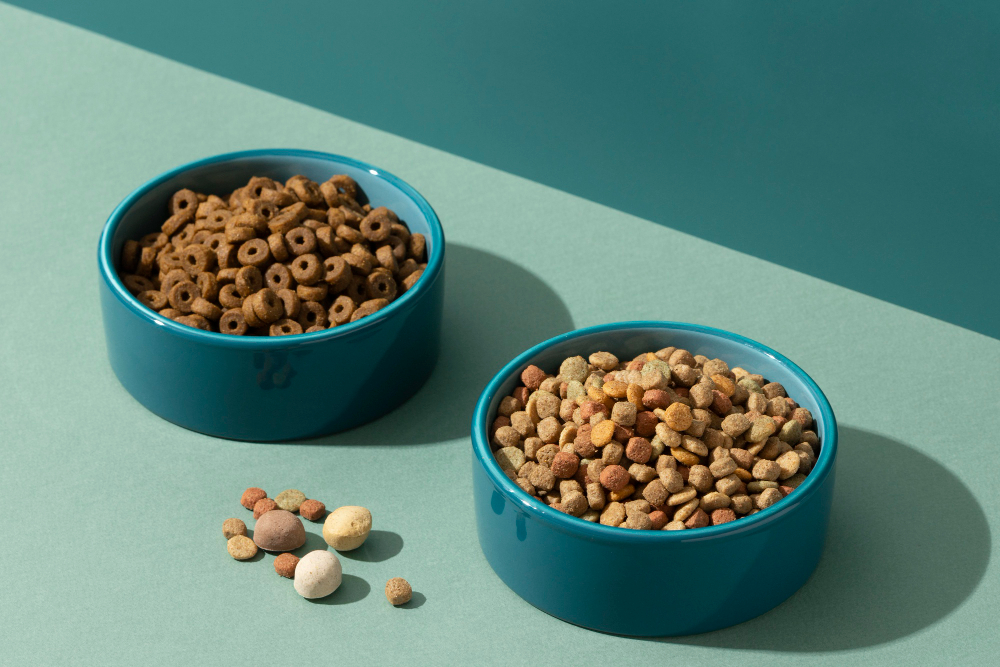A pet’s health and quality of life are inextricably linked to their nutrition. As such, it’s imperative to store pet food correctly to preserve its nutrients and characteristics. The way you store pet food plays a pivotal role in maintaining the product’s safety and preserving its appealing traits such as odor and flavor, which are key factors that influence a pet’s food intake, especially for more discerning animals. To understand more about the role of taste buds in your dog’s food preferences, you can refer to this article.
Common Pitfalls in Pet Food Storage
When it comes to storing your pet’s food, it’s crucial not to overlook certain common mistakes. Poor hygiene of the food storage bowl and feeder can affect the longevity of pet food. The area around the feeder can become dirty, attracting insects and leading to the food spoiling more quickly. Overfeeding is another common mistake, as leftovers can attract unwanted microorganisms.
Preserving Dry Pet Food: A Step-by-Step Guide
Dry pet food is a popular choice among pet owners due to its convenience and the assurance that the product contains all the nutrients your pet needs. However, despite being processed, it requires careful storage, much like any other food product. Here are some key steps to follow:
- Package Integrity: Pet food is often sold in well-sealed packages, some even vacuum-sealed, to prevent air contact with the kibbles. This is crucial for preserving the quality of the food, especially vitamins and fats, which can oxidize when exposed to air, heat, and humidity. Therefore, avoid puncturing the package and only open it when serving your pet.
- Post-Opening Storage: After opening the package, it’s essential to store it in a well-sealed container with a lid to prevent exposure. For instance, you can place the open packet in a bucket with a lid or seal it well if you don’t have an appropriate container.
- Bulk Buying: If you have a small pet and choose to buy larger bags for cost-effectiveness, one way to keep the food fresh is to portion out a few days’ worth into a smaller container, protecting it from heat and humidity. Remember to choose a dark container to avoid light exposure. If this isn’t possible, store the container inside a cupboard.
- Home Storage: For home storage, packages should not be in direct contact with the floor or walls. They can be placed on shelves or other objects, with proper protection to prevent damage and contamination through moisture, dirt, insects, or rodents. For more information on how insects can affect pet food, you can refer to this article.
Storing Wet Pet Food: Key Considerations
Wet foods, typically sold in sachets or cans, have a different consistency and ingredient composition than dry foods due to their higher water content. They can serve as a treat or even form the basis of your pet’s diet, provided they are labeled as “complete and balanced food”. For a comprehensive guide on canned food for cats, you can check out this article. Here are some tips for storing wet pet food:
- Serving and Storage: Open the can or sachet only when feeding your pet. If your pet doesn’t finish the food, discard the rest immediately to prevent bacterial growth.
- Refrigeration: After opening, store the remainder in the closed package in the refrigerator for up to two days or as recommended on the box. Always inspect and smell the wet food before feeding it to your pet, checking for any sour smell or texture changes.
Feeder Care: An Essential Aspect
Even with the above tips, it’s crucial to maintain the cleanliness of your pet’s feeder. Wash them after each meal with water and neutral detergent, and avoid leaving the container with food exposed to the sun. For cats, who feed several times a day, consider using automatic feeders that release a predetermined amount of food at specific times. This prevents the food from being exposed to climatic factors, insects, and humidity, and allows them to follow their natural eating patterns.
By adhering to these guidelines on how to store pet food, you can ensure a healthy diet for your furry friend, protecting them from potential health complications.
Conclusion
In conclusion, the importance of proper pet food storage cannot be overstated. It plays a crucial role in maintaining the nutritional value, safety, and appeal of the food, which directly impacts your pet’s health and quality of life. Whether it’s dry or wet food, each type requires specific storage practices to ensure its longevity and prevent spoilage.
Moreover, it’s essential to avoid common mistakes such as poor hygiene of storage containers and overfeeding. By adhering to the guidelines outlined in this article, you can ensure that your pet’s food remains fresh, nutritious, and safe for consumption. Remember, the way you handle and store your pet’s food can significantly influence their eating habits and overall health.
Ultimately, as a pet owner, your furry friend’s well-being is in your hands. By investing a little time and effort in proper food storage, you can contribute significantly to their health, happiness, and longevity. After all, a well-fed pet is a happy pet.

